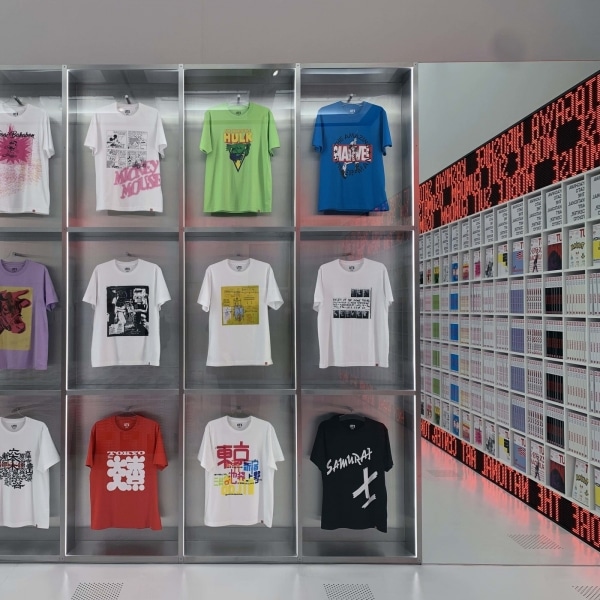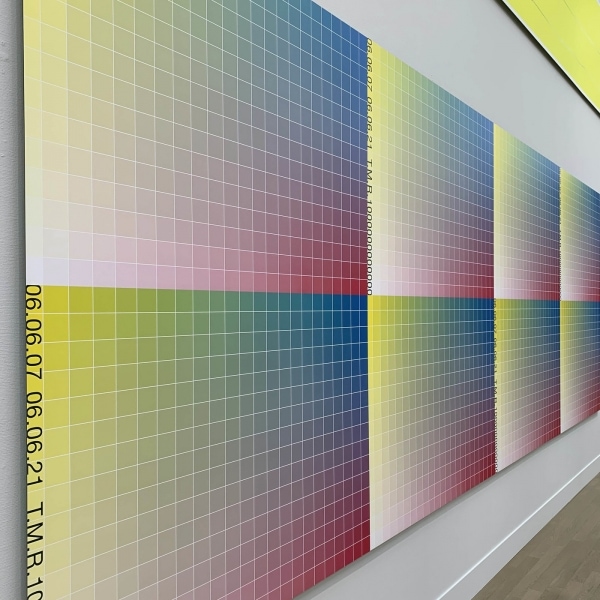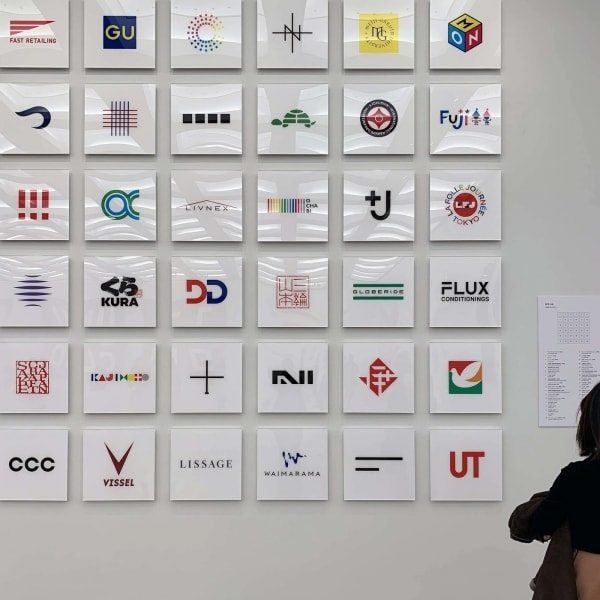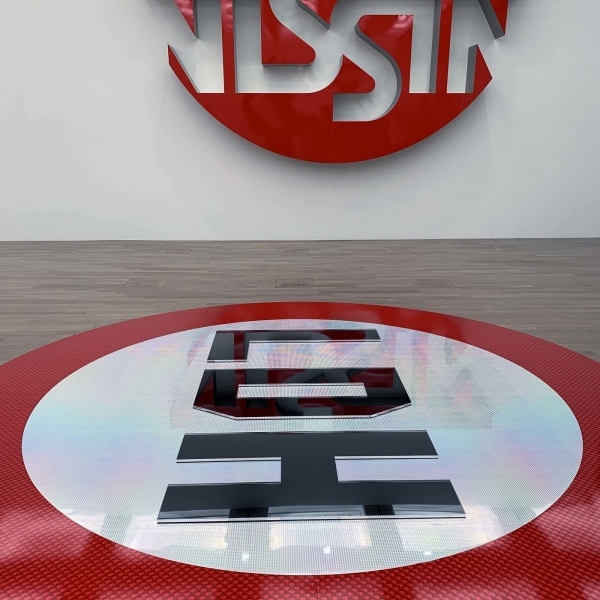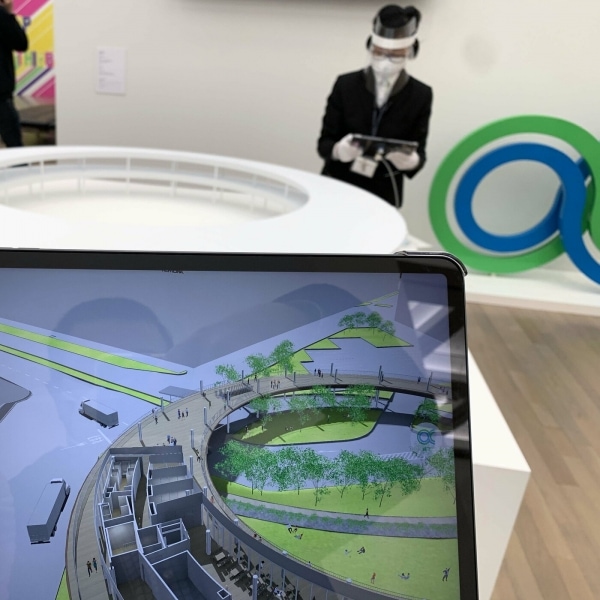"KASHIWA SATO" Exhibition at THE NATIONAL ART CENTER, TOKYO
What do have in common iconic brands such as Uniqlo, Rakuten or Seven-Eleven? They share the same creative talent and his unique approach to branding. Recently I visited the latest exhibition at THE NATIONAL ART CENTER, TOKYO(NACT), dedicated to the multitalented creative director Kashiwa Sato. Initially scheduled in 2020, the show was postponed to this month due to the pandemic.
The National Art Center, Tokyo is a "museum that introduces various artistic expressions and raises new perspectives", and it regularly organizes exhibitions on design and architecture. Among the others, I remember those dedicated to Issey Miyake and Tadao Ando for their outstanding quality and interest. The bond between Kashiwa Sato and the museum is long-standing. When NACT opened in 2007, the designer was in charge of the museum's overall visual identity. He proposed the kanji character 新(new) to symbolize its identity. The museum's openness - designed by Kisho Kurokawa - is suggested though the open space within each element of the logo.
Kashiwa Sato is one of the most attention-grabbing creative of contemporary Japan. After graduation from Tama Art University, he worked as an employee at Hakuhodo Inc. Then, in 2000, he founded his own practice SAMURAI Inc. His activity span from graphic design and branding to space design and architecture. In the 19th century, Richard Wagner defined the concept of "total work of art", where different kind of arts collaborates to produce a "total experience". Walter Gropius coined the idea of "total architecture", where the architect can control the design at any scale, "from the teaspoon to the city". Kashiwa Sato shares a similar vision, and the exhibition at NACT is proof of his ability to design everything, including the spatial composition of the venue and the display. Therefore, the entire show is an example of "total design", able to wrap the visitors with its stimulating and inspiring setup.
"Sato's unique methodology is to adopt a basic principle of visual design — clarifying the information to be conveyed, grasping its essence, and deriving visual language and signposts that are immediately accessible to a mass audience — and apply it to a wider, more diverse range of situations far exceeding the purview of visual design".
This exhibition is the largest dedicated to the work of the Japanese creative director. It includes more than fifty works, over the past thirty years, showcased through various exhibition methods. Graphic design and branding are displayed through unusual techniques, such as turning 2d images into spatial design, using augmented reality or converting big data into animations. Now, try to imagine the challenge of organizing an exhibition of graphic design that could attract the general public. The first step would be avoiding the showcasing of printed logos hanging on the walls, creating a more intriguing and viral space instead. "This is what makes the presentation at the exhibition difficult", states Sato. "Since everyone has seen the logo of UNIQLO and Seven Premium in the streets every day, it wouldn't be interesting if I show them at the exhibition. For the past two years since the exhibition has been fixed, I have been thinking about visualising the wide variety of my works. They will not be printed on the A4 sheets of paper, but they will be presented using huge drawings, sculptures and pop-art. Ultimately, I wish to make an exhibition where each project is presented differently, and the visitors can experience the spaces, products, videos and interactive works".
Visiting the exhibition at NACT is an engaging experience, similar to watching a movie. The show is divided into six sections, each featuring a diverse exhibition method and atmosphere. The first room is entitled "THE SPACE WITHIN" and includes the designer's personal background and early inspirations, including "super-organization", the thinking at the basis of Sato's design. The second section, "ADVERTISING AND BEYOND", focuses on the advertising media. Sato was among the first to go beyond the traditional media (television, radio, newspapers, and magazines) and understanding the enormous potentials of unusual media such as beverage can, shopping bags, or pocket tissues distributed to passers-by on the roadside. The third and fourth sections explore the strategies to convey the essence of corporate philosophy into iconic signs. The secret of an efficient logo lies in the simplicity and scalability of its design, together with precise shapes and recognizable colors. "ICONIC BRANDING PROJECTS" is perhaps the most exciting section, with fascinating examples of successful branding projects completed in recent years: from Seven-Eleven to Imabari Towel, from NISSIN to Fuji Kindergarten. The latter is beautifully presented through a 3d model and augmented reality. This advanced approach is also adopted in "UNLIMITED SPACE", an interactive digital installation created together with Rakuten Design Lab and Rakuten Institute of Technology. Here, the words searched on Rakuten are projected on the shape of a human figure that mirrors each visitor's movements in the room. The sixth section, "LINES / FLOW", shows Sato's activity as a "painter/drawing artist" through two artwork series.
Even part of the exhibition store, at the end of the route, is a design project. UNIQLO's graphic T-shirt brand "UT" is presented here in the original “UT STORE @ THE NATIONAL ART CENTER, TOKYO”, with the typical pop/minimal layout that characterize all the UT stores. The final impression is that of a timeless style linked with a "cool" approach to design. In a recent interview, Sato replied: “always keep your eyes and mind cool,” when asked about the best piece of advice ever received.

 English
English 日本語
日本語




